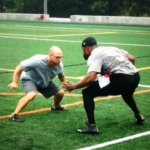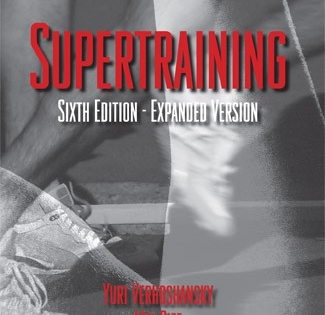Notes from “Supertraining: 6th Edition, Expanded Version” by Yuri Verkhoshansky and Mel Siff:
1) Movement is not just Biomechanics, but also involves the Brain and Behavior (3 B’s of Movement – Shawn Myszka)
- “Note that the term kinesiological pattern is used in preference to “biomechanical pattern” or “biomechanics” to emphasize that we are not simply referring to the action of force as an entity in physics, but as an active motor process which involves a complex of psychological and physiological factors.”
- “Not only does coordination in space and time vary widely, but the motor act as a whole is still dynamically unstable and its final effect is inefficient and unstable.”
2) On reaction time and movement time:
- “It is important to note that no correlation between reaction time and movement time has been demonstrated… There are two electrical transmission lags associated with the reaction time (excluding any central processing time):
– the time taken for the sensory input to reach the central nervous system
– the time taken for a motor impulse to travel from the central nervous system to the muscles” - “Apparently the latency period is determined largely by genetics and is minimally affected by training, so that improvement in quickness has to focus on modifying the response or movement phase.”
3) On isometric movements and stretch reflex movements:
- “When the muscles are relaxed or in a state of isometric tension, the speed and power of their subsequent contraction is determined primarily by the nervous impulses to the muscles. If the muscles are subjected to a preliminary stretch by an external force, then the work they perform is further aided by some of the elastic energy which they have accumulated.”
What this means: When testing Central Nervous System Readiness, we should use movements from an isometric-hold position (Vertical Jump from a bottom-position isometric).
4) The force-velocity curve doesn’t work for stretch reflex movements
- “the force-velocity curves associated with different types of jumping or stretch-shortening processes was discussed in section 1.12, which showed no inverse relationship between force and velocity.” – Page 148. “It must be noted that the Hill and Perrine-Edgerton curves do not apply to actions which strongly recruit the stretch reflex or involve the release of stored elastic energy.” – Page 152
5) Greater strength does not equal greater speed
- “There is no correlation between maximal velocity and maximal strength.” “It is inappropriate to assume that development of great strength will necessarily enhance sporting speed.”
- “All too often, the solution to most performance problems in such sports seems to be a philosophy of “the greater the strength and the greater the muscle hypertrophy, the better”, despite the fact that one constantly witnesses exceptional performances being achieved in these sports by lighter and less strong individuals.”
6) If you want to get ‘fast twitch’, you should rest
- Resting after hard training causes an ‘overshoot’ in fast twitch muscle. “If an athlete wishes to increase the relative amount of fast muscle fibre isoforms, a logical method would be to decrease the training load and allow the faster fibres to express themselves a few weeks later.”
- Muscles want to be fast twitch, exercise shifts them slow twitch. “Immobilisation causes the normally slow-twitching soleus muscle to become fast twitching.” “The ‘default’ option for muscles seems to be the fast myosin chain.”
7) Gaining muscle has many drawbacks for sports performance
- “With the development of non-functional hypertrophy, the increase in muscle mass outstrips the development of the vascular system.” This results in diminished nutrition and oxygenation of the muscle and less efficient disposal of metabolic waste products from the musculoskeletal system.
- Increasing muscle mass with no regards to tendons and ligaments can lead to issues. “Adaptation occurs more slowly in connective tissue (such as tendons and ligaments) than in muscle and any increased tension made possible in the musculotendinous complexes by the increased muscle mass can cause damage to these structures.”
Potential upside to gaining muscle size: “it is important to note that maximum strength produced by training is retained for longer if it is founded first upon a base of increased muscle hypertrophy. It declines more rapidly if it is enhanced primarily on the basis of improved neuromuscular efficiency.”



